In the U.S., poppy seeds act as punctuation—adding a nutty accent to bagels or lending slight crunch to muffins and quick breads. But in Central and Eastern Europe, poppy seeds are often the whole story, used by the cup in strudels, cakes, even puddings.
One item in particular stood out to us: a golden-brown bread containing a rich, dark swirl of poppy seed filling that goes by many names. It’s called Mohnstriezel in Germany, makowiec in Poland, mákos beigli in Hungary.
Regardless of the country, the recipe is much the same: Make a sweet, yeasted dough and a dense, unctuous filling with plenty of poppy seeds and sugar. Roll the dough out thin, slather it with the filling, then roll it up tight and, after a brief rise, bake it.
The light-crumbed loaf is served by the slice, topped with sweetened cream or powdered sugar. Because poppy seeds symbolize abundance, this roll has long been a staple at weddings, New Year’s parties and other festive occasions.
We loved the bread’s striking appearance and, more importantly, its abundant use of poppy seeds. When scaled up and ground, as they are in poppy seed rolls, their fruity, nutty flavor—typically subtle and overlooked—comes out in full force. Grinding releases their aromatic oils as well as a slight mustiness, which most recipes counteract with sugar and milk. We instead decided to rely on a classic poppy seed foil—lemon—to cut through that earthy flavor.
Traditional recipes call for milk in both the dough and filling, so we streamlined and boosted the flavor at the same time by infusing a little more than a cup of whole milk with lemon zest. We whisked in a bit of honey over medium heat and divided the milk—using some for the dough and the rest for the filling.
For the dough, we wanted to pare back the sweetness that’s typical of most recipes—instead aiming for a buttery, brioche-like flavor. We skipped adding any more sugar and used a stand mixer to incorporate flour and salt into part of the lightly sweetened milk. That was followed by six tablespoons of butter, added gradually, to give us a silky, elastic, slightly sticky dough, which we set aside to rise.
In Poland and elsewhere, grocery stores stock cans of dense, syrupy poppy seed filling. We knew that we would need to make our own from scratch and that we’d need a full cup of seeds. We had success finding them in bulk at spice shops, Eastern European markets and even some Whole Foods stores.
Standard methods for preparing the filling involve either soaking the seeds in hot water for hours or repeatedly dousing them with boiling water. We wanted to simplify, but the seeds proved surprisingly difficult to pulverize. We tried toasting them, soaking them in hot milk and grinding them with sugar in the food processor, but nothing seemed to soften them. The only tool that reliably ground the raw seeds was a spice or coffee grinder.
That gave us a fine poppy powder, which we combined with the remaining milk mixture, just 1/3 cup of sugar and a bit of salt. We simmered the mixture until all the liquid was absorbed. The paste thickened to a smooth, spreadable consistency as it cooled—key to keeping the filling in place on the dough. Anything thinner spilled out when we formed the bread’s swirl.
After the dough had risen, we used a rolling pin to shape it into a seed paste over it, then rolled it into a tight cylinder. To give the dough time to develop a lighter, airier crumb, we allowed it to proof for a half hour more before transferring it to the oven.
But when it came to baking, we found our rich, tender dough couldn’t hold up to the dense filling—the bread split at the bottom of the loaf repeatedly during the course of our testing. The poppy seed paste would seep out of the seams onto the baking sheet, leaving us with an uneven swirl and wasted filling.
Thankfully, the solution was simple. Before the loaf went into the oven, we scored the top five times; the cuts allowed steam to escape from the filling and prevented the bread from bursting at the bottom, resulting in a perfect, contained swirl. As a bonus, the slits expanded as the loaf baked, revealing the dark filling inside—a sharp visual contrast with the golden-brown crust.
To reinforce the lemon flavor in the finished loaf, we made a glaze with lemon juice and powdered sugar that we drizzled on just before serving. It balanced the earthiness of the poppy filling and brightened the loaf’s buttery flavor.
The result was a rich holiday bread with a light, tender crumb, a lightly sweet, slightly nutty filling and a stunning presentation, whether served whole or by the slice.
First We Fill...
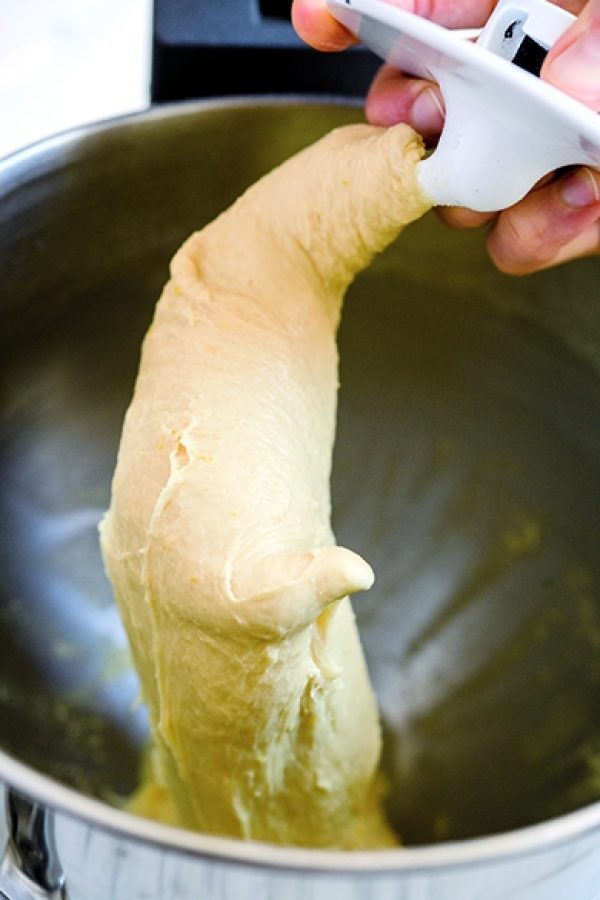
Room-temperature butter is essential for getting a smooth and silky dough. It should be sticky but not clingy; if it’s wet, add more flour,
1 tablespoon at a time.
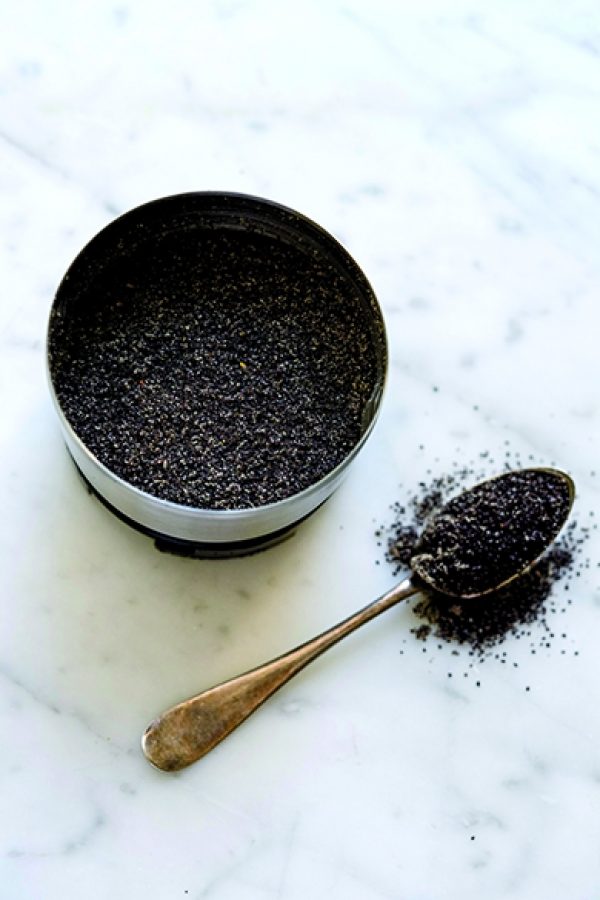
To grind the poppy seeds, use an electric coffee or spice grinder. Process the seeds in three batches, for 15 seconds each, until they are fine and powdery.
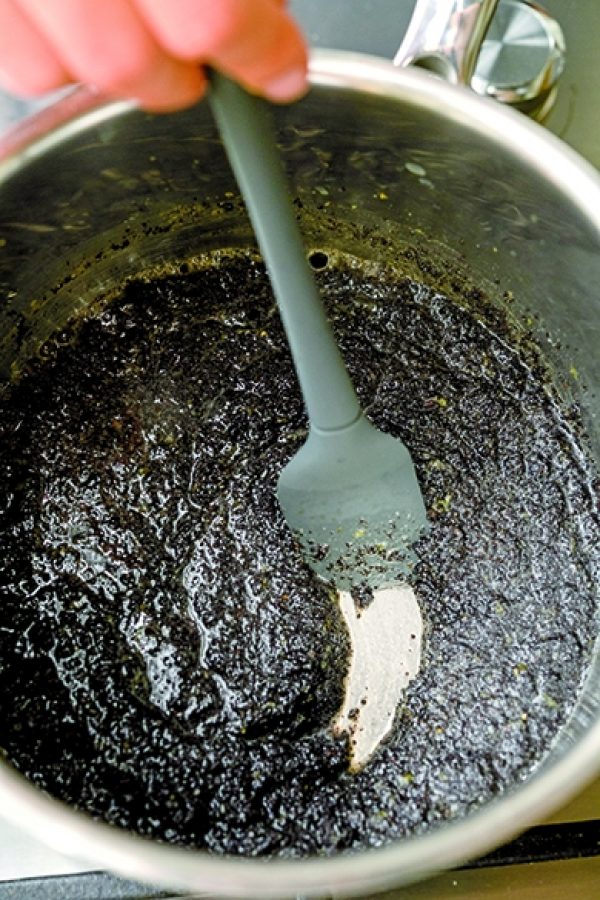
Cook the filling until a spatula leaves a clear trail when drawn through the center, 3 to 5 minutes. The poppy seed-milk mixture will thicken more as it cools.
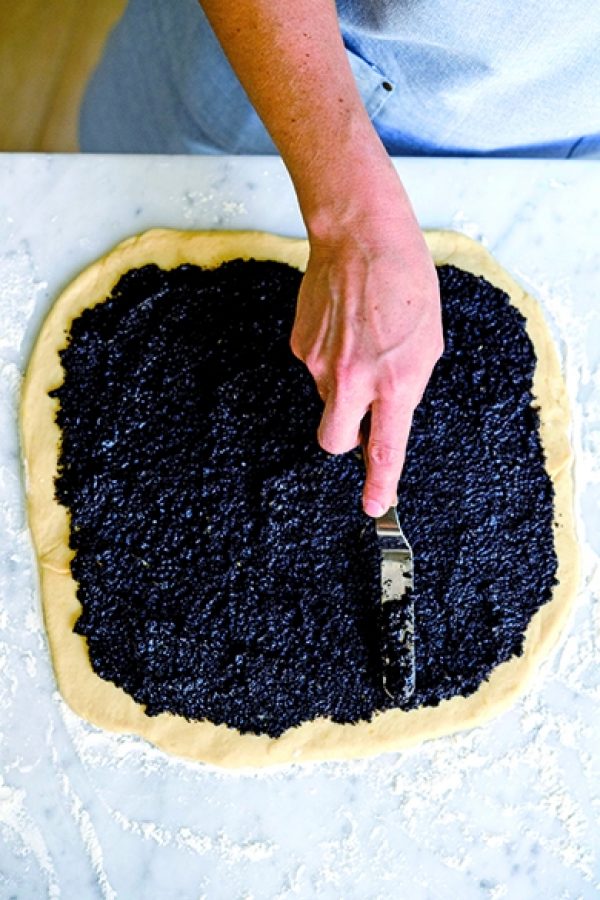
Roll the dough out into a 12-inch square, then spread the filling on the dough, leaving a ½-inch border along each edge.
Then, Seal!
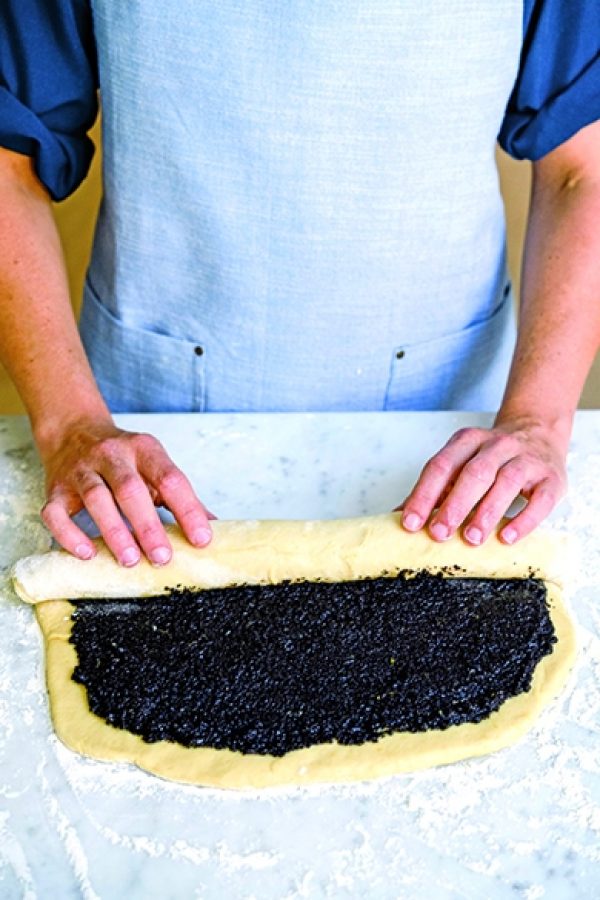
Roll the dough into a cylinder, starting with the side closest to you. Press down gently to keep each roll tight.
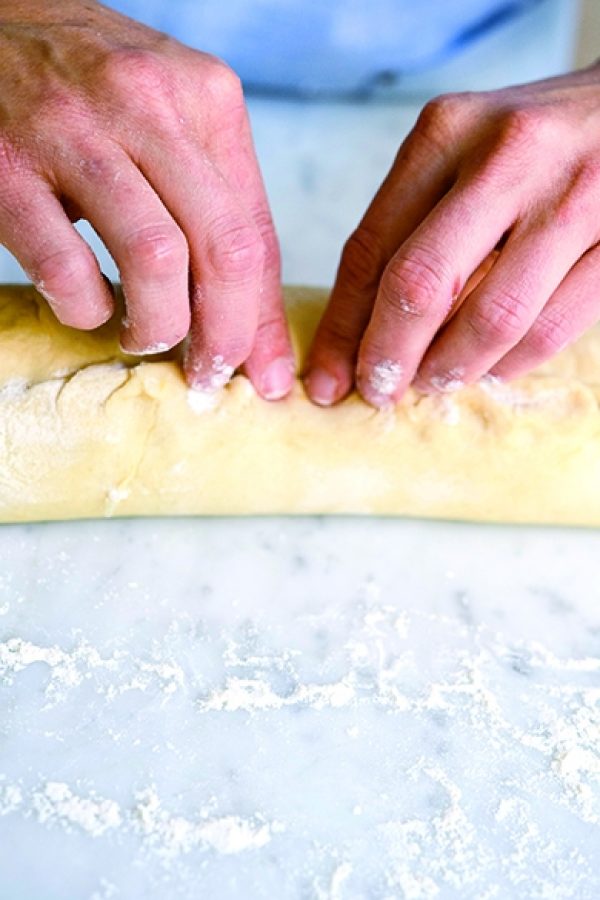
Pinch the dough together at the seam to seal it, then transfer to the baking sheet, setting the roll seam side down.
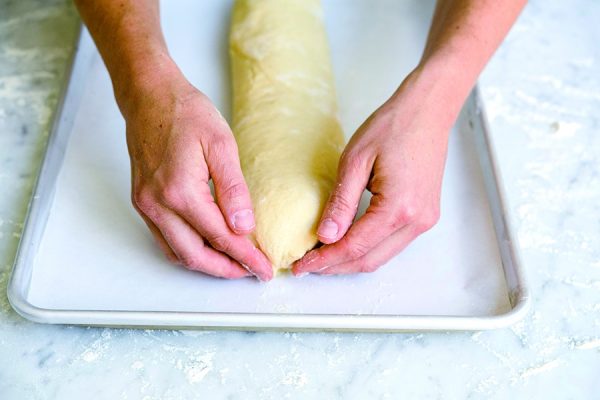
Pinch the openings at both ends of the roll, rounding them off, then tuck the seams underneath the loaf.
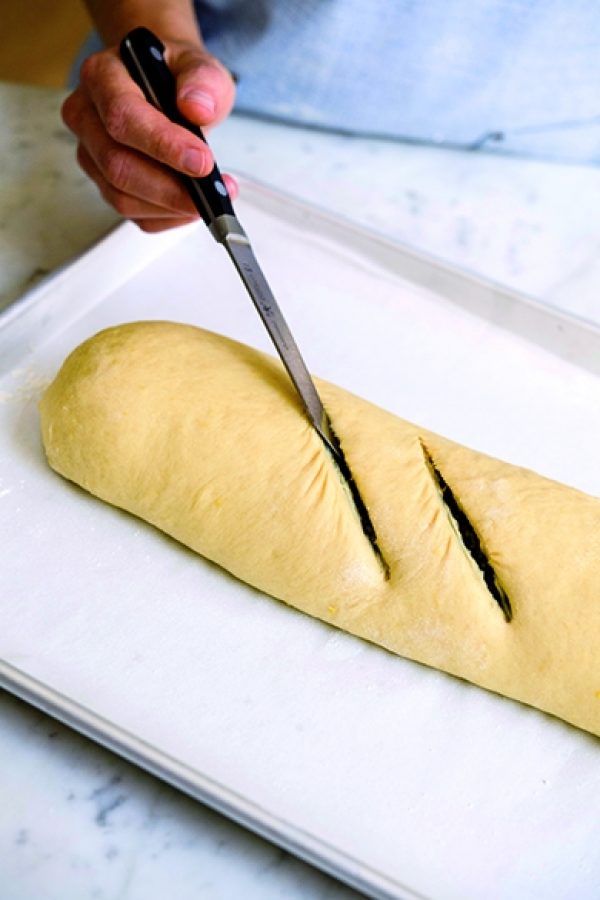
Starting at the center, use a sharp paring knife to make 5 shallow, diagonal cuts through the top of the loaf.
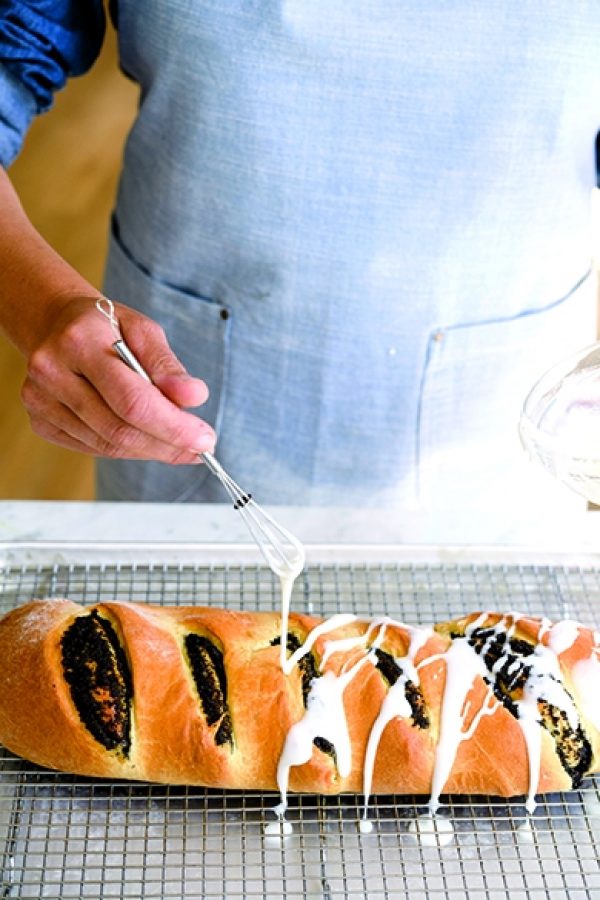
Once the bread has cooled, make the lemon glaze, then drizzle over the top. Let dry for about 30 minutes.




